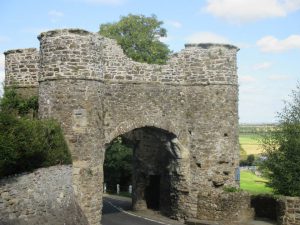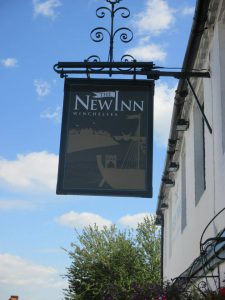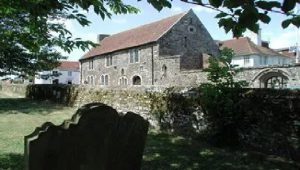Part 19: RYE AND ITS “RIVALS”, CONTINUED.
In the nineteenth of our series of articles describing how one couple finds their new life in Rye, they look beyond the Town and Camber Sands to places further afield for the sake of comparison with their (still relatively) new home.
In the second of this mini-series, we pop along the coast to Winchelsea.
Small but perfectly formed?

For someone who grew up in a Lancashire town of over 100,000 people, Rye seems pretty dinky. But compared to Winchelsea, it is a veritable metropolis. Rye’s near-neighbour is the smallest town in England to boast its own mayor. A mere 600 souls live in Winchelsea; and when we visited last summer, we hardly saw a soul. Quiet? I’ll say.
Shared history.
Like Rye, Old Winchelsea was a medieval town of importance with a bustling port trading with the Continent. In the 13th century, Winchelsea and Rye joined the alliance originally formed by Hastings, Romney, Hythe, Dover and Sandwich – the ‘cinque ports’.
In fact, when the great storms of the 1300s destroyed Old Winchelsea, King Edward I considered the port so vital for trade and defence that he commanded that it to be rebuilt from scratch on its current site up on the hill.

Starting with a blank sheet of paper, the town was laid out in a grid pattern – like a Roman fort or modern New York. It is a highly unusual if not unique feature for an English medieval town, which generally have the higgley-piggedly layout of, say, the City of London.
To the beach.
Because New Winchelsea sits on the hill, it’s a hike to the beach – another similarity with Rye. Arguably, though, with its dunes and expansive sands, Camber is more worth the trip than the shingle of Winchelsea.
That said, with apparently so little to do in Winchelsea, the beach beckons. The town has the sum total of one church, one museum, one shop, one pub. However, according to the town’s website, the locals manage to keep themselves entertained with various clubs and societies – choral, literary, artistic, garden, Guy Fawkes, cricket, bowls.
Digging it.

Of particular interest to my archaeologist partner would be the Winchelsea Archaeological Society. WAS has completed geophysical surveys of the medieval town and assisted the National Trust in recording and interpreting the pottery found in the cellar of Blackfriars Barn.
During the Summer months, the Society also organises the famous Winchelsea cellar tours. We’ll have to book our places next year.
In the meantime, we were impressed by the Church, named after St. Thomas the Martyr, Archbishop of Canterbury, who was murdered in his own Cathedral in 1170.
While the Church has the usual complement of interesting tombs and stonework, the star attraction has to be the stained glass windows designed and created by Aberdeen artist Gordon Strachan as a memorial to the fallen of the first world war. There is something quite striking about his modern artworks in the setting of a medieval building.

Of course, many people have heard of the Church because of the famous occupant in its churchyard: Spike Milligan.
Near to the Church is the Court Hall Museum, which is also worth a quick visit. And then, after a pint in the New Inn, I think we’ve exhausted the attractions of Winchelsea.
So, Winchelsea is a pleasant enough place for a day-trip, but I can’t imagine living there; it’s just too small for me.
Image Credits: Simon Kershaw .



